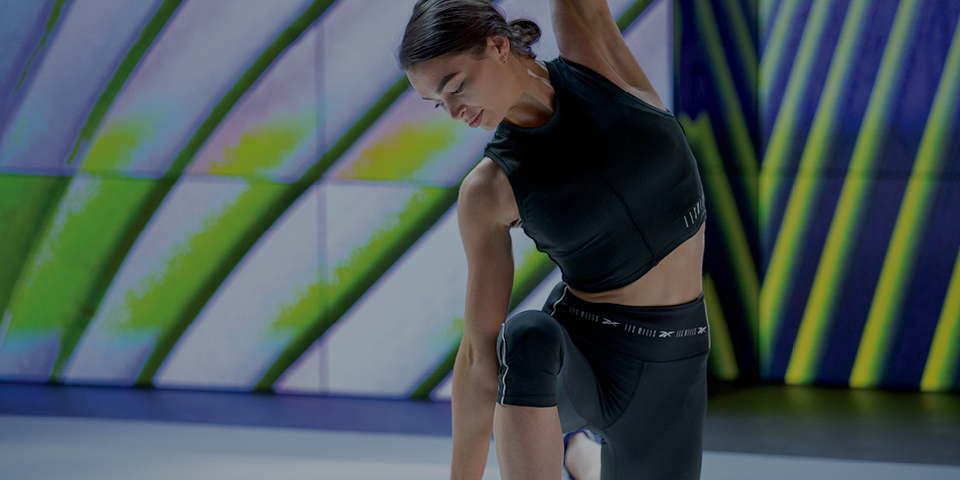No matter where you are in your fitness journey, stretches should not be neglected. Not only can they improve flexibility and prevent injury but, in the case of dynamic stretches, they also prepare your muscles for exercise by gradually increasing your heart rate and blood flow. They can be a fantastic addition to your workout routine for many reasons such as improved range of motion, enhanced performance and, as mentioned, injury prevention.
Warming up before exercise is crucial for several reasons, and it essentially prepares your body to transition from rest to physical activity. Each Village Gym in the UK has a dedicated warm-up area, so take the time to warm up properly, and set yourself up for a safer, more enjoyable, and ultimately more productive workout. With proper warm-up, you’ll see improved muscle performance, increased blood flow, and better oxygen delivery, so ensure you aren’t missing this vital step in your sessions for the best possible results for all your hard work in the gym.
Looking for some guidance on Dynamic stretching for the lower body? You’ve come to the right place. Read on for your complete guide to dynamic stretches for the lower body and be on your way to a more well-rounded and beneficial workout routine - whether you’re a beginner or a pro!
Understanding Dynamic Stretches for the Lower Body
What are dynamic stretches and what are the benefits?
Dynamic stretches are active movements that mimic the motions you'll be using during your workout, gradually increasing your heart rate and blood flow. Unlike static stretches (where you hold a position), dynamic stretches involve controlled, repetitive movements that take your joints and muscles through their full range of motion.
Think of them as waking up your muscles and getting them ready for action! Here are some key points about dynamic stretches:
-
Movement-based: They involve continuous, controlled movements like leg swings, arm circles, or lunges with twists.
-
Warm-up focus: They're ideal before exercise to prepare your body for activity, not for deep stretching.
-
Improved performance: They can actually enhance your athletic performance by increasing blood flow and activating your nervous system.
-
Injury prevention: By warming up your muscles, they can help reduce the risk of strains and tears.
Imagine your muscles are like cold engines. Static stretches are like slowly stretching a tight rubber band - good for after a workout when your muscles are already warm. Dynamic stretches are like gently revving your engine - preparing it for smooth operation when you hit the gas (your workout), ensuring you don’t cause injury - or stall!
Lower Body Dynamic Stretches
We’ve put together some excellent lower body dynamic stretches to get you started on your path to improved blood flow and range of motion:
1. Leg Swings (Hamstrings, Glutes, Quads):
-
Stand tall with one hand on a wall or chair for support.
-
Swing one leg forward and backwards in a controlled motion, keeping your core engaged and your back straight.
-
Gradually increase the height of your swing as your leg warms up.
-
Repeat for 10-15 swings on each leg.
2. High Knees (Quads, Hips):
-
Begin by jogging in place, but bring your knees up high towards your chest with each stride.
-
Focus on maintaining a good running posture with your core engaged and shoulders relaxed.
-
Perform for 30 seconds to 1 minute.
3. Butt Kicks (Hamstrings, Glutes):
-
Similar to high knees, but instead of bringing your knees up, kick your heels towards your glutes with each running stride.
-
Maintain good form and focus on driving your heels back with each kick.
-
Perform for 30 seconds to 1 minute.
4. Walking Lunges with Arm Circles (Glutes, Quads, Core):
-
Take a big step forward with one leg, lowering your hips until both knees are bent at 90-degree angles.
-
As you lunge, reach your opposite arm overhead in a circle.
-
Push back up to the starting position and repeat with the other leg, circling your other arm.
-
Focus on keeping your front knee aligned over your ankle and your core engaged throughout the movement.
-
Perform 8-12 lunges on each leg.
5. Inchworms (Hamstrings, Core):
-
Stand tall and slowly hinge forward at your hips, reaching your hands towards the ground as you walk your hands down your legs.
-
Keep your back straight and core engaged as you lower yourself down.
-
Once your hands reach your feet, slowly walk your hands back up your legs, returning to the starting position.
-
Perform 5-10 repetitions.
Power Up Your Workout with Dynamic Stretches for Lower Body
So there you have it! Your fool-proof guide to lower body dynamic stretches for any level of fitness. We gave you the tools, so get out there and get working on your goals with these stretches in mind.
There are a great number of lower-body dynamic stretches you can try out and, if you want a more personalised plan that meets your goals and fitness criteria, why not find out more about Village Gym’s Personal Trainers? They’ll be there every step of the way to see you smash through your milestones, offering support, expert advice and more.
Discover our locations throughout the UK and join like-minded fitness enthusiasts who entrust us with their workouts. With fully equipped, state-of-the-art facilities, and plenty of group classes such as yoga, step classes and more, there’s an option for everyone. Browse our membership types and find the membership perfect for you and your goals. We’re all in this together, and, with us by your side, you’re well on your way to a better, healthier you.
FAQs About Lower Body Dynamic Stretches
Are dynamic stretches the same as static stretches?
No. Dynamic stretches involve controlled movements, while static stretches hold a position for a set time. Dynamic stretches are ideal for a warm-up routine to prepare your muscles for activity, while static stretches are better for after exercise to improve flexibility.
How many repetitions and sets should I do for each dynamic stretch?
A good range is typically 10-15 repetitions per leg or arm swing, repeated for 1-2 sets. However, this can vary depending on your fitness level and the intensity of your workout. It's always best to listen to your body and avoid pushing yourself into pain.
Can dynamic stretches improve my athletic performance?
Yes! Dynamic stretches can actually enhance your performance by increasing blood flow, activating your nervous system, and improving your range of motion. This can lead to better power, agility, and reaction time.
I have some injuries or limitations. Can I still do dynamic stretches?
It's important to modify dynamic stretches based on your individual needs. If you have any injuries or limitations, consult a doctor or physical therapist for a personalised routine that's safe and effective for you.
Is it okay to feel some tightness during dynamic stretches?
It's normal to feel some mild pulling or tightness as you're warming up your muscles. However, you shouldn't feel any sharp pain. If you experience pain, stop the stretch and consult a healthcare professional.


